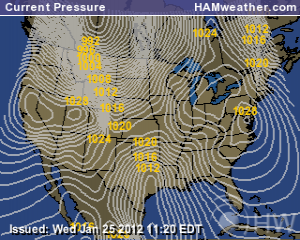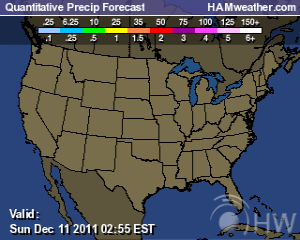Asteroid YU55 Approach May be Closer Than What we Are Being Told
With all the concern from the approaching YU55 comet and with the National alert system being introduced Wednesday , I have been doing some investigating and have found some interesting math calculations. Below are some calculations that lead me to believe that this will pass by much closer than what NASA is claiming it will. It appears that we could be over 150,000 miles closer than we are being told. That being said, I do not think we are in danger but it does raise a question to why they would lead us to believe that this is going to be passing much farther from the earth than what some people believe. Read below and if you are a math wiz, It may make some sense!
I am an engineer and my job involves various approaches to manipulating and analyzing data. I have this macro tool i use to interpolate and extrapolate data. So I took the distances of YU55 between Nov 4 - 11 (according to JPL, the close approach data is Nov 9 at 0.0022AU). Therefore, i get the following dataset:
Date Ref App Dist.
4 -5 0.0391
5 -4 0.0312
6 -3 0.0234
7 -2 0.0156
8 -1 0.0079
9 0 0.0022
10 1 0.0085
11 2 0.0162
Then I interpolate a per hour basis. So it looks something like:
Date Ref App Dist.
4 -5 -0.0391
-4.958333333 -0.038770833
-4.916666667 -0.038441667
-4.875 -0.0381125
… … …
Now think about this for a second… First of all, over a 7 day period, the trajectories of these two bodies are going to be relatively linear (straight). Therefore, the relative distance between the two will be linear as well (no corealis or angular acceleration or anything like that). Therefore, I should not see any significant disturbances in the data.
Secondly, the day to day distance given by jpl is taken at a 24 hr interval. Everything in between, they interpolate (supposedly just like I did). I compared their hour by hour distance to my interpolated data. All was spot on Until I got to the 8th (day before/of close approach). I observed that their distance decayed much more slowly than mine. So I created the following data. Notice, i applied the use of negative and positive distance to account for distance before and after close approach:
4 -5 -0.0391
5 -4 -0.0312
6 -3 -0.0234
7 -2 -0.0156
8 -1 -0.0079
9 0 0.0022
10 1 0.0085
11 2 0.0162
And came up with this during the course of Nov 8th:
8 -1 -0.0079
-0.958333333 -0.007479167
-0.916666667 -0.007058333
-0.875 -0.0066375
-0.833333333 -0.006216667
-0.791666667 -0.005795833
-0.75 -0.005375
-0.708333333 -0.004954167
-0.666666667 -0.004533333
-0.625 -0.0041125
-0.583333333 -0.003691667
-0.541666667 -0.003270833
-0.5 -0.00285
-0.458333333 -0.002429167
-0.416666667 -0.002008333
-0.375 -0.0015875
-0.333333333 -0.001166667
-0.291666667 -0.000745833
-0.25 -0.000325
-0.208333333 9.58333E-05
-0.166666667 0.000516667
-0.125 0.0009375
-0.083333333 0.001358333
-0.041666667 0.001779167
9 0 0.0022
Which indicates that the close approach distance is actually 0.0000958333 AU at about 7pm.
When I plotted this across the close approach date (9th, or day 0), I saw an odd jink (referenced above by differing distance decay), indicating that the supposed close approach distance (.0022) was further than the distance that the data would indicate IF (0, .0022) was not a ‘known’ point in the data.
So, I took the same approach, except using this data as reference:
Date Ref App Dist.
4 -5 -0.0391
5 -4 -0.0312
6 -3 -0.0234
7 -2 -0.0156
8 -1 -0.0079
10 1 0.0085
11 2 0.0162
Now things get interesting. According to this data, removing the supposed close approach distance which made me suspicious, the following is what the 8th looks like:
8 -1 -0.0079
-0.958333333 -0.007558333
-0.916666667 -0.007216667
-0.875 -0.006875
-0.833333333 -0.006533333
-0.791666667 -0.006191667
-0.75 -0.00585
-0.708333333 -0.005508333
-0.666666667 -0.005166667
-0.625 -0.004825
-0.583333333 -0.004483333
-0.541666667 -0.004141667
-0.5 -0.0038
-0.458333333 -0.003458333
-0.416666667 -0.003116667
-0.375 -0.002775
-0.333333333 -0.002433333
-0.291666667 -0.002091667
-0.25 -0.00175
-0.208333333 -0.001408333
-0.166666667 -0.001066667
-0.125 -0.000725
-0.083333333 -0.000383333
-0.041666667 -4.16667E-05
9 0 0.0003
0.041666667 0.000641667
0.083333333 0.000983333
Which indicates that the close approach distance is 0.0000416667AU = 3904 miles at about 11pm on the 8th, which is quite about closer than 200,000 miles.
This might not make sense to some. All I am trying to say here is that it appears the JPL data is inconsistent.
Courtesy of Tom Servo
10 Responses to Asteroid YU55 Approach May be Closer Than What we Are Being Told
You must be logged in to post a comment Login





Pingback: États-Unis: test du système d’urgence nationale et YU55 mercredi | TVQC
Pingback: Asteroid YU55 Approach May be Closer Than What we Are Being Told - WEATHER-TECH | WEATHER-TECH « All-out US-China nuclear war, looming, to wipe out one-fourths of the earth.
Pingback: Premières images de l’astéroïde 2005 YU 55 ! | Solution Crédit
Pingback: YU55 passera plus prés de la Terre selon les calculs de l’ingénieur Kyle Shilt!
“Therefore, the relative distance between the two will be linear as well”
That’s where you’re wrong. Do the math for a simple case:
One particle “A” starting at (-1,0) and moving to the right along the horizontal axis as a function of time: (-1 + t, 0)
A second particle “B” starting at (0,-2) moving up: (0, -2 + t)
I intentionally picked different constants so they dont collide.
The relative distance will be sqrt((t-2)^2+(t-1)^2)
Which is the same as sqrt(2t^2-6t+5)
Plot that thing and you’ll see it, its asymptotically linear but it’s definitively non-linear when the objects are at their closest.
Pingback: YU55 passera plus prés de la Terre selon les calculs de l’ingénieur Kyle Shilt! | Solution Crédit
Pingback: Asteroid YU55 Approach May be Closer Than What we Are Being Told :
Pingback: ALERT SYSTEM : Message destiné aux ressortissants étrangers vivants aux USA | Le libre arbitre
Pingback: Dernière minute, YU55 passera plus près de la Terre selon les calculs de l’ingénieur Kyle Shilt! | Le libre arbitre
Pingback: message de GOLD-UP | Les moutons enragés